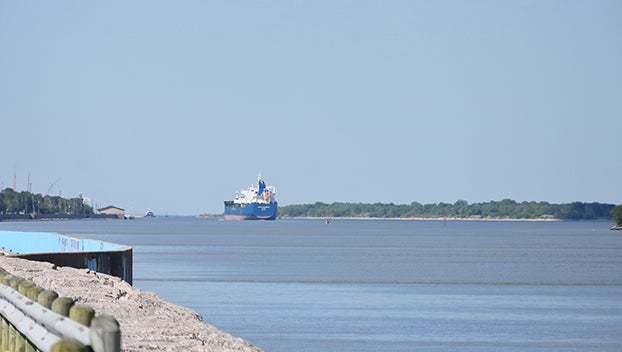Artificial reefs coming to Texas coastline
Published 8:02 am Sunday, August 23, 2015
The Texas Artificial Reef Program is starting to gain some real traction.
Local anglers know of the Basco Reef and S.A.L.T. Reef out of Sabine Pass, both located within range of medium-sized craft.
Now the Texas Parks & Wildlife Department (TPWD) has signed a contract to create two reefs on the Upper and Middle Coast area.
“This will be the largest deployment of reef material in nearshore waters off Texas in the history of the Texas Artificial Reef Program,” said Dale Shively, director of the TPWD artificial reef program.
“The project calls for 2,400 concrete pyramids to be reefed, which will provide much-needed habitat for all types of marine life as well as provide increased recreational fishing opportunities.”
According to TPWD, the Matagorda Artificial Reef Project will create a new artificial reef site (BA-439) within Texas state waters in the Gulf of Mexico, approximately 10 miles (8.7 nautical miles) offshore of Matagorda County. The project will create 160 acres of artificial reef through deployment of concrete pyramids onto sandy substrate at a water depth of 60 feet. The total estimated cost of the project is $3,552,398.
In addition they reported the Freeport Artificial Reef Project will increase the amount of reef materials in a currently permitted artificial reef site (BA 336), the George Vancouver (Liberty Ship) Artificial Reef, located about six miles offshore from Freeport.
“The current site is permitted for 160 acres, but only has materials in 40 acres. The project will place predesigned concrete pyramids in the remainder of the 160-acre permitted area onto sandy substrate at a water depth of 55 feet. The total estimated cost of the project is $2,155,365.”
The U.S. Fish and Wildlife Service’s 2015 Waterfowl Population Status Report summarizes information on the status of duck and goose populations and habitat conditions during the spring of 2015.
Overall, according to Service official’s population estimates for most species of ducks remained steady for this breeding season.
“In the traditional survey area, which includes Alaska, the north-central United States, and south-central and northern Canada, the total 2015 duck population estimate (excluding scoters, eiders, long-tailed ducks, mergansers and wood ducks) is 49.5 million birds. This population estimate is similar to the 2014 estimate of 49.2 million, and is 43 percent higher than the long-term average (1955-2014).”
Although most duck populations remain steady, when and where waterfowl will be encountered this fall depends on many factors according to Service officials.
There are many factors that go into duck season including the severity of the winter, however we are off to a good start with a strong breeding duck index.
Speaking of ducks, the Louisiana Department of Wildlife and Fisheries have set their duck seasons and bag limits. The information is below.
DUCKS AND COOTS: 60 days
• Coastal Zone: Nov. 7-Dec. 6; Dec. 19-Jan. 17
• West Zone: Nov. 14-Dec. 6; Dec. 19-Jan. 24
• East Zone: Nov. 21-Dec. 6; Dec. 19-Jan. 31 (Including Catahoula Lake)
• Youth Waterfowl Weekend: Oct. 31 and Nov. 1 in the Coastal Zone, Nov. 7 and Jan. 30 in the West Zone, Nov. 14 and Feb. 6 in East Zone.
• Daily Bag Limits: The daily bag limit on ducks is 6 and may include no more than 4 mallards (no more than 2 of which may be females), 2 canvasback, 1 mottled duck, 1 black duck, 3 wood ducks, 3 scaup ducks, 2 redheads, and 2 pintails. Daily bag limit on coots is 15.
• Mergansers: The daily bag limit for mergansers is 5, only 2 of which may be hooded mergansers. Merganser limits are in addition to the daily bag limit for ducks.
• Possession Limit: The possession limit on ducks, coots and mergansers is three times the daily bag limit.
(To contact Chester Moore, e-mail chester@kingomzoo.com. You can hear him on the radio Fridays from 6-7 p.m. on Newstalk AM 560 KLVI or online at www.klvi.com.)





